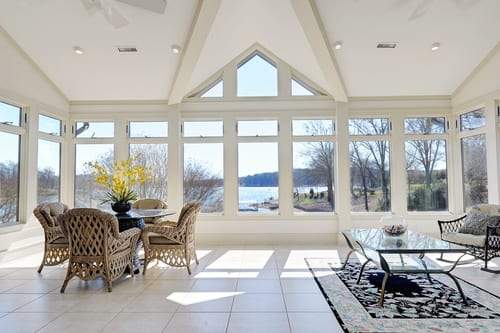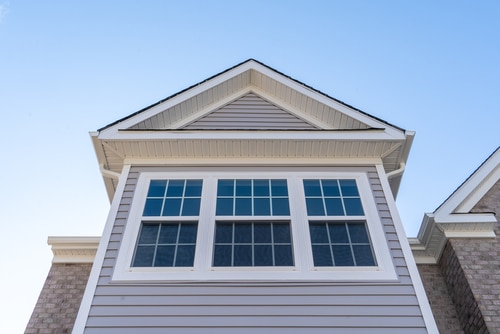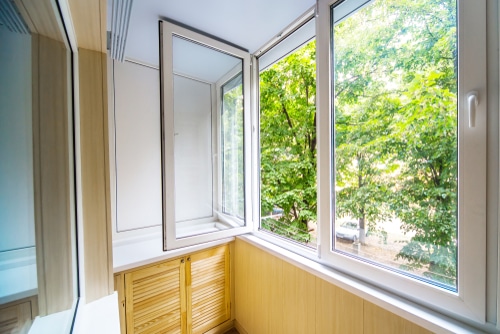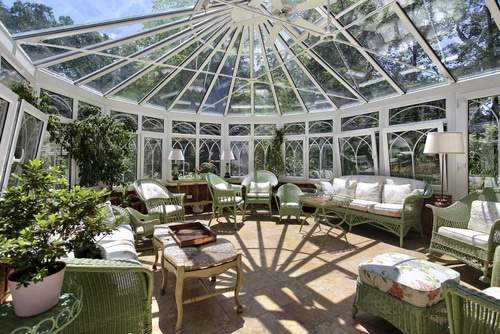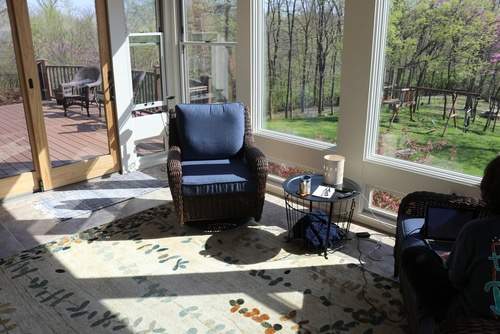Considerations Before Upgrading to Vinyl Windows
Before upgrading to vinyl windows, homeowners should consider several factors to ensure the investment meets their needs and expectations. Assessing the current condition of existing windows and understanding the financial aspects of the upgrade are crucial steps in the decision-making process.
Assessing Current Window Conditions
The first step in considering a window upgrade is to evaluate the condition of your current windows. Signs such as drafts, difficulty opening or closing, condensation between panes, and noticeable wear and tear indicate that your windows are no longer performing efficiently. Additionally, if your home still has single-pane windows, upgrading to double or triple-pane vinyl windows can significantly improve insulation and energy efficiency. Assessing these conditions helps determine the necessity of replacement and which windows need immediate attention, allowing for a more strategic approach to the upgrade.
Understanding the Investment
Upgrading to vinyl windows represents a significant financial investment, and understanding the cost versus the long-term benefits is essential. A detailed cost analysis should include not just the windows’ price but also installation costs, which can vary depending on the complexity of the job and the contractor chosen. While the upfront expense may seem substantial, it’s essential to consider the long-term benefits, such as reduced energy bills, increased comfort levels, and enhanced curb appeal, which can all contribute to a higher home value.
Moreover, vinyl windows’ durability and low maintenance requirements mean that the savings extend beyond energy costs, including reduced upkeep expenses over the years. Compared to the ongoing costs associated with older, less efficient windows, the initial expense of vinyl window upgrades can be justified as a wise investment in your home’s future.
In summary, before upgrading to vinyl windows, homeowners should thoroughly assess the condition of their existing windows and conduct a comprehensive cost analysis. Understanding the balance between the initial investment and the long-term benefits will ensure that the decision to upgrade is informed and beneficial in the long run.
The Installation Process of Vinyl Windows
Upgrading to vinyl windows is a significant home improvement project that can enhance your home’s energy efficiency, aesthetic appeal, and overall value. However, the success of this upgrade largely depends on the installation process, making it crucial to choose the right contractor and understand what to expect during the installation.
Choosing the Right Contractor
Selecting a contractor is perhaps the most critical step in the vinyl window installation. A qualified and experienced contractor ensures that your new windows are installed correctly, maximizing their performance and durability. When searching for a contractor, look for those with specific experience installing vinyl windows. Check their credentials, such as licensing and insurance, and ask for references to gauge their reliability and the quality of their work. Additionally, reputable contractors should be willing to provide a detailed quote and explain the installation process, helping you make an informed decision.
What to Expect During Installation
Once you’ve selected a contractor, understanding the installation timeline and potential disruptions can help you prepare for the process. Typically, the installation of vinyl windows can take a few days to a week, depending on the number of windows and the job’s complexity. Your contractor should provide a clear timeline, including the start and completion dates.
During installation, expect some disruption to your daily routine. Workers will need access to your home, and there may be noise, dust, and temporary changes in home security. However, professional installers will minimize inconvenience by covering furniture, securing the work area, and cleaning up after the job.
To ensure a smooth installation process, communicate openly with your contractor about any concerns or specific requirements you may have. Proper preparation and understanding of the installation process can significantly reduce stress and ensure that your vinyl window upgrade is successful, enhancing your home’s comfort and value for years.
Long-Term Benefits and Maintenance of Vinyl Windows
Vinyl windows are renowned for their durability, energy efficiency, and low maintenance requirements, making them an excellent investment for homeowners. To maximize the benefits of vinyl windows over the long term, understanding proper maintenance practices and the sustained performance of these windows is essential.
Maximizing the Lifespan of Vinyl Windows
The longevity of vinyl windows is one of their most appealing attributes. With a lifespan exceeding 20 years, these windows offer enduring value. Regular maintenance is vital, albeit minimal, to ensure they reach their full potential. Unlike wood windows, which require frequent painting and sealing, vinyl windows need only primary care to maintain appearance and functionality. Cleaning the frames with a mild soap and water solution periodically will keep them looking new. Additionally, lubricating the tracks and hardware with a silicone-based lubricant can ensure smooth operation.
Maintenance Tips
Beyond cleaning and lubrication, inspecting the sealant around the window frame annually can prevent air leaks and maintain energy efficiency. If cracks or gaps are found, a simple caulk can remedy the issue. It’s also wise to check the condition of the weather stripping and replace it when worn to keep the windows airtight. These simple maintenance steps can significantly extend the life and performance of vinyl windows.
Energy Efficiency Over Time
One of the primary reasons homeowners choose vinyl windows is their energy-saving benefits. The design of these windows, featuring double or triple-pane glass and inert gas fills, provides excellent insulation. This energy efficiency is immediate and sustained over time, contributing to lower heating and cooling costs year after year. Regular maintenance, as mentioned, ensures that this efficiency is not compromised, allowing homeowners to enjoy continuous savings.
In conclusion, the long-term benefits of vinyl windows, including their minimal maintenance requirements and sustained energy efficiency, offer homeowners lasting value. By adhering to simple maintenance practices, the lifespan and performance of these windows can be maximized, ensuring ongoing comfort and cost savings.

